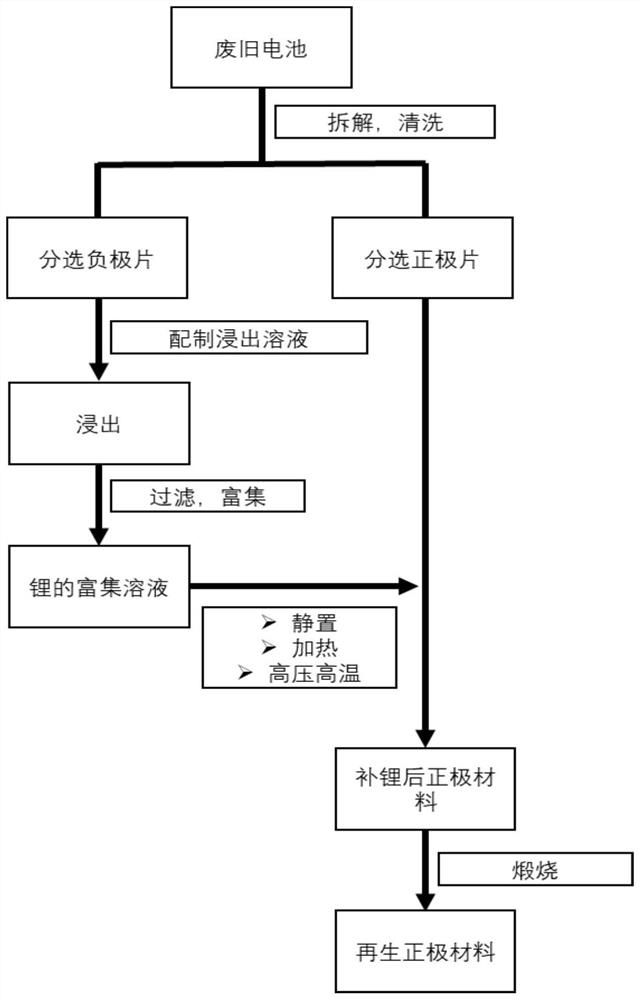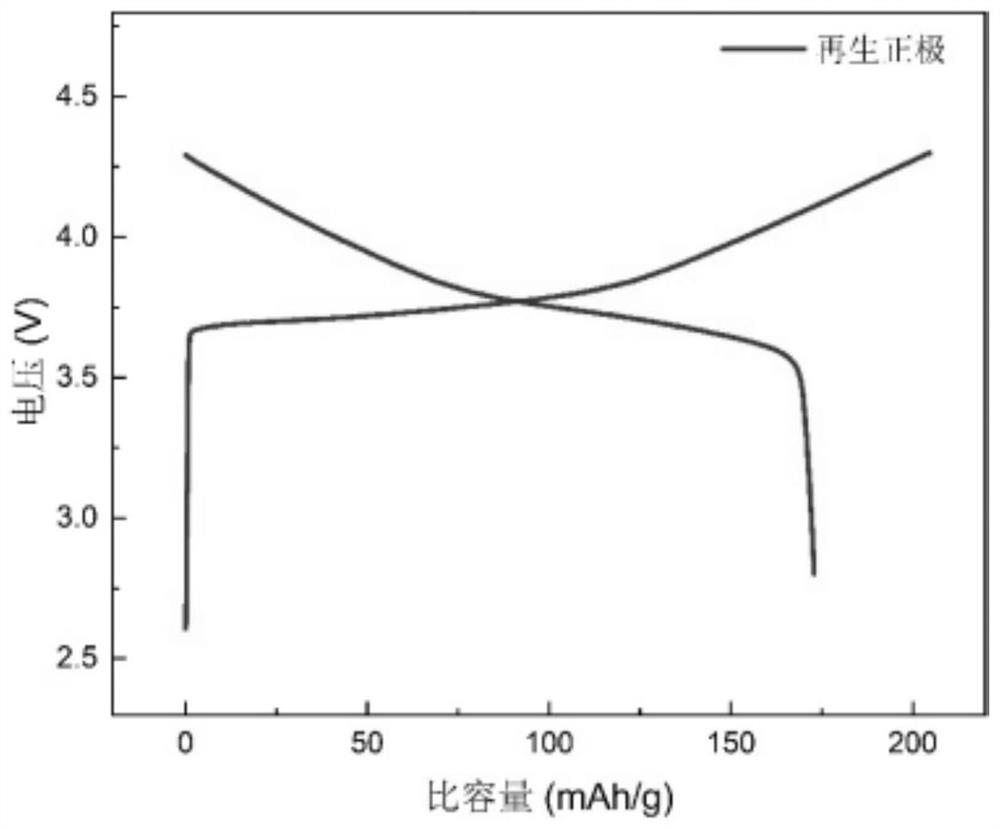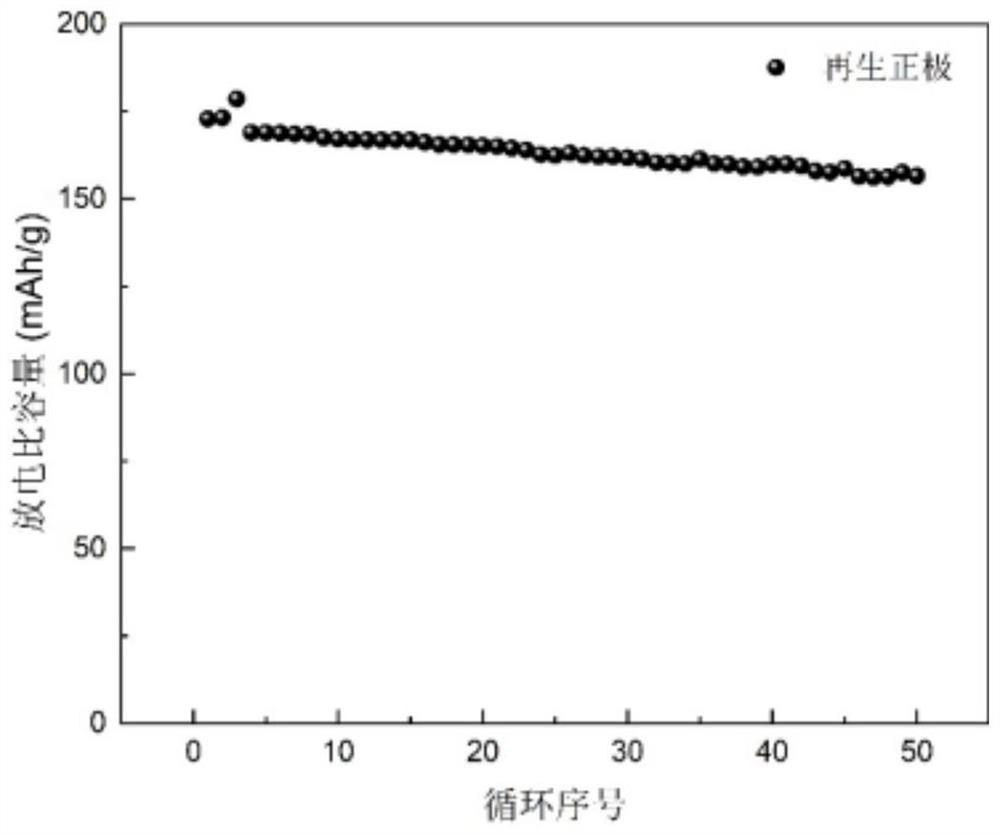Closed-loop recycling method of lithium in lithium ion batteries
A lithium-ion battery, closed-loop technology, applied in battery recycling, recycling technology, battery electrodes, etc., can solve problems such as high energy consumption, non-compliance with energy conservation and emission reduction, reduce intermediate processing links, suitable for large-scale promotion, and enrich recycling effect of technology
- Summary
- Abstract
- Description
- Claims
- Application Information
AI Technical Summary
Problems solved by technology
Method used
Image
Examples
Embodiment 1
[0057] (1) Disassemble the recycled waste batteries in a safe environment, and sort out the negative electrode pieces: in a drying room with a relative humidity of 5%, disassemble the waste nickel-cobalt manganate lithium batteries charged to 4.3V, and sort out Negative electrode sheet, to clean the residual lithium salt on the surface;
[0058] (2) Leach, separate and enrich the negative electrode sheet with the leaching solution to obtain a lithium enrichment solution: configure the leaching solution, add 20.2 g of pyrene and 100 ml of ethylene glycol dimethyl ether solvent into the flask, and stir until it becomes clear and transparent solution;
[0059] The cut negative electrode pieces were put into the leaching solution in batches, the leaching temperature was 60°C, and the solid-liquid mass ratio was 1:3. The leaching time was 2 hours. After the leaching is completed, the solution is suction filtered, separated, and the enriched solution of organolithium is obtained b...
Embodiment 2
[0064] (1) Disassemble the recycled waste batteries in a safe environment, and sort out the negative electrode pieces: Disassemble the waste nickel-cobalt manganate batteries charged to 4.3V in a drying room with a relative humidity of 5%, and sort out Negative electrode sheet, to clean the residual lithium salt on the surface;
[0065] (2) Leach, separate and enrich the negative electrode sheet with the leaching solution to obtain a lithium enrichment solution: configure the leaching solution, add 20.2 g of pyrene and 100 ml of ethylene glycol dimethyl ether solvent into the flask, and stir until it becomes clear and transparent solution;
[0066] The cut negative electrode sheets were put into the leaching solution in batches, the leaching temperature was 60°C, the mass ratio was 1:3, and the leaching time was 2 hours. After the leaching is completed, the solution is suction filtered, separated, and the enriched solution of organolithium is obtained by evaporating the solve...
Embodiment 3
[0071] (1) Disassemble the recycled waste batteries in a safe environment, and sort out the negative electrode pieces: Disassemble the waste nickel-cobalt manganate batteries charged to 4.3V in a drying room with a relative humidity of 5%, and sort out Negative electrode sheet, to clean the residual lithium salt on the surface;
[0072] (2) Leach, separate and enrich the negative electrode sheet with the leaching solution to obtain a lithium enrichment solution: configure the leaching solution, add 20.2 g of pyrene and 100 ml of ethylene glycol dimethyl ether solvent into the flask, and stir until it becomes clear and transparent solution; put the cut negative electrode pieces into the leaching solution in batches, the leaching temperature is 60°C, and the mass ratio is 1:3. The leaching time was 2 hours. After the leaching is completed, the solution is suction filtered, separated, and the enriched solution of organolithium is obtained by evaporating the solvent.
[0073] (3...
PUM
 Login to View More
Login to View More Abstract
Description
Claims
Application Information
 Login to View More
Login to View More - R&D
- Intellectual Property
- Life Sciences
- Materials
- Tech Scout
- Unparalleled Data Quality
- Higher Quality Content
- 60% Fewer Hallucinations
Browse by: Latest US Patents, China's latest patents, Technical Efficacy Thesaurus, Application Domain, Technology Topic, Popular Technical Reports.
© 2025 PatSnap. All rights reserved.Legal|Privacy policy|Modern Slavery Act Transparency Statement|Sitemap|About US| Contact US: help@patsnap.com



